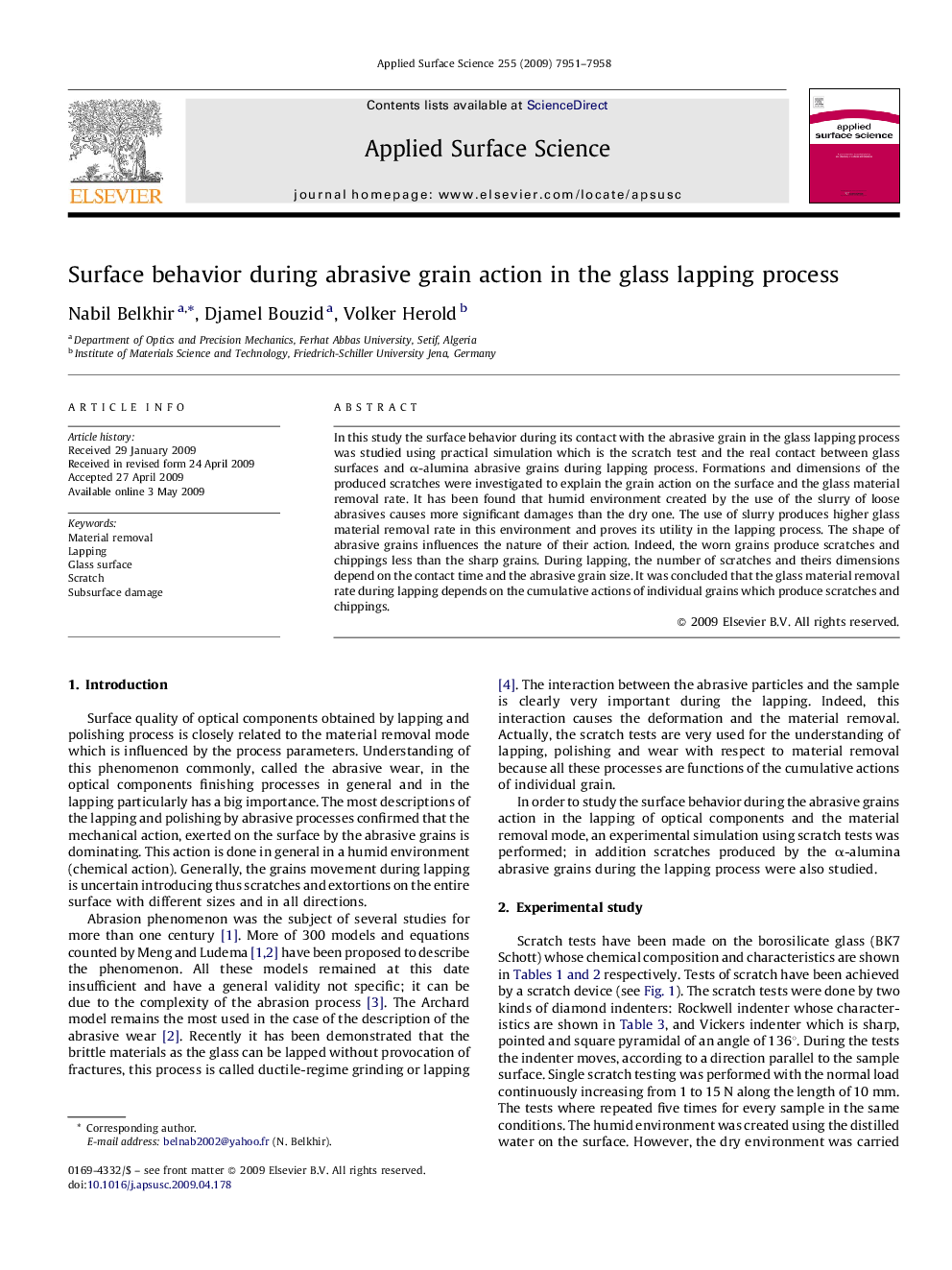| Article ID | Journal | Published Year | Pages | File Type |
|---|---|---|---|---|
| 5366578 | Applied Surface Science | 2009 | 8 Pages |
In this study the surface behavior during its contact with the abrasive grain in the glass lapping process was studied using practical simulation which is the scratch test and the real contact between glass surfaces and α-alumina abrasive grains during lapping process. Formations and dimensions of the produced scratches were investigated to explain the grain action on the surface and the glass material removal rate. It has been found that humid environment created by the use of the slurry of loose abrasives causes more significant damages than the dry one. The use of slurry produces higher glass material removal rate in this environment and proves its utility in the lapping process. The shape of abrasive grains influences the nature of their action. Indeed, the worn grains produce scratches and chippings less than the sharp grains. During lapping, the number of scratches and theirs dimensions depend on the contact time and the abrasive grain size. It was concluded that the glass material removal rate during lapping depends on the cumulative actions of individual grains which produce scratches and chippings.
